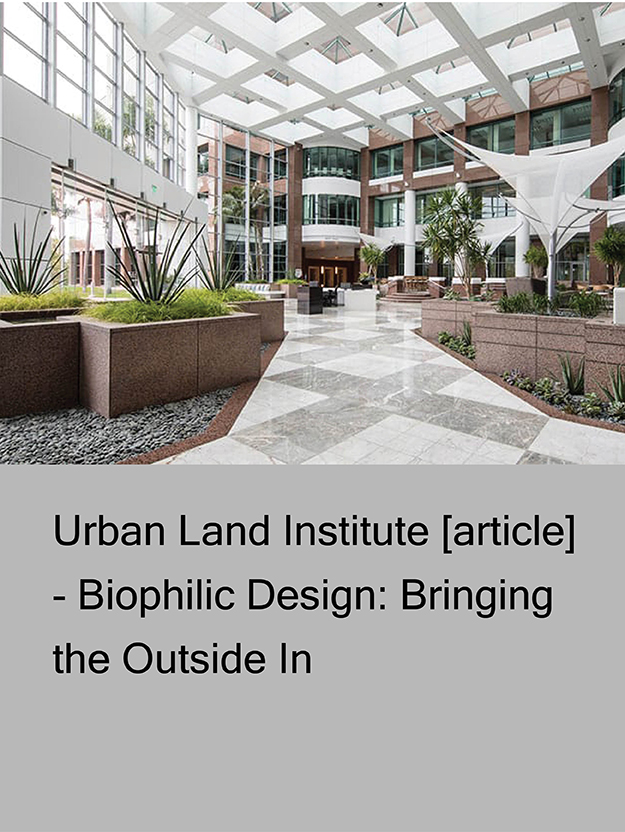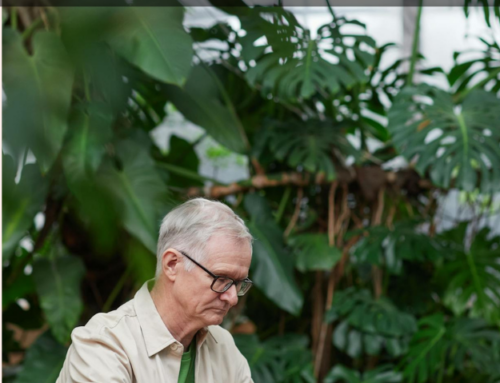Biophilic Design: Bringing the Outside In

Humans, on average, spend the vast majority of their time indoors. Yet scientic studies on human health conclude that spending time in and around nature, or even just looking at natural elements, can have wide-ranging benets. The real estate industry is closing the gap between these conicting concepts by bringing nature indoors with biophilic building design. Whether as a living wall, an indoor water feature, a green roof, wood building materials, or art that evokes nature, biophilia is growing in popularity. Biophilic design—the practice of connecting people and nature within built environments and communities—is making spaces more authentic and memorable in a meaningful way. Within the real estate industry, building certications and standards are major drivers for the adoption of biophilic design concepts; many green certication programs require buildings to adopt various biophilic elements to achieve increasing levels of recognition. The International Living Future Institute (ILFI) certies buildings under the Living Building Challenge, which infuses biophilic design into nearly all its requirements. The WELL Certication, operated by the International WELL Building Institute, includes biophilia concepts, broken down into phases, as part of its health and human experience design framework and is built around seven key elements of wellness—air, light, water, nourishment, tness, comfort, and mind.





